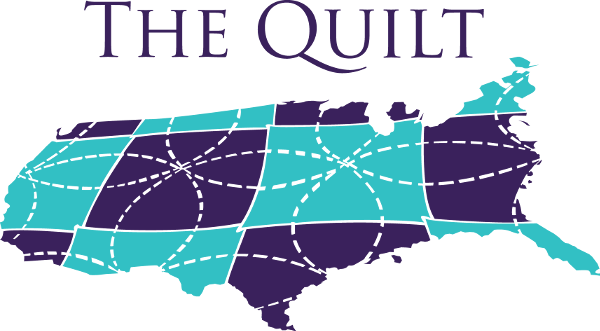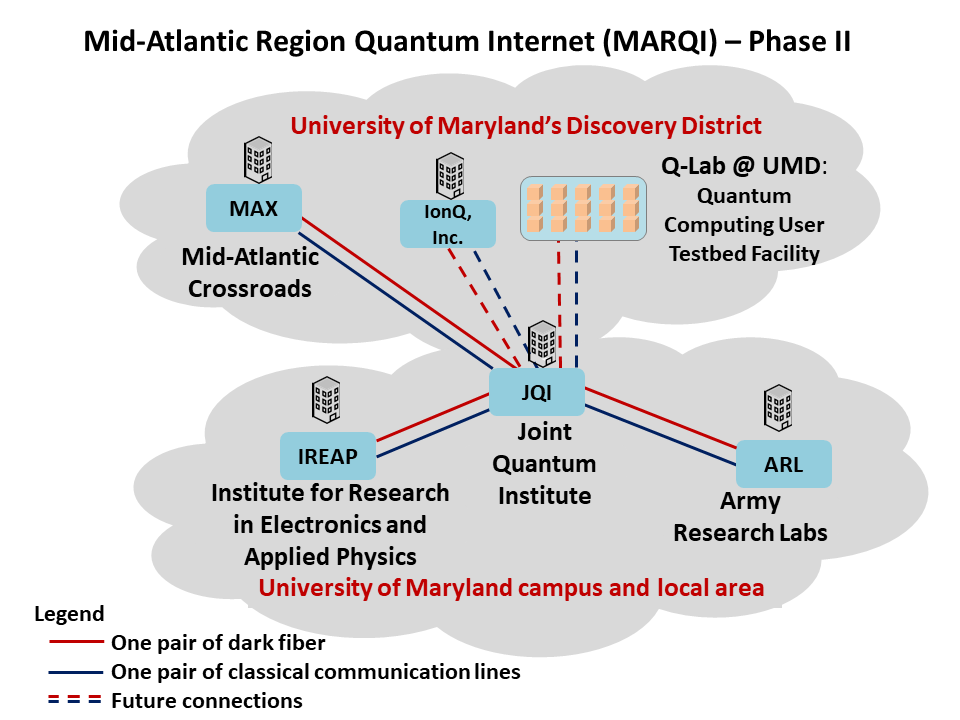The National Science Foundation recently awarded $5 million through a two-year cooperative agreement to a multi-institutional team for the Quantum Networks to Connect Quantum Technology (QuaNeCQT) Project (NSF Award #2134891). The research team includes Edo Waks (PI, UMD), Norbert Linke (co-PI, UMD), Tripti Sinha (co-PI, UMD/MAX), Dirk Englund (co-PI, MIT), and Saikat Guha (co-PI, U. Arizona).
The goal of QuaNeCQT is to develop technologies and hardware that enable quantum computers to communicate over the Internet. This project is a continuation of the work completed by the same multi-institutional team in 2020 (NSF Award #2040695).
QuaNeCQT is a logical next step as more and more quantum computers emerge. Just like the classical Internet revolutionized lives by enabling computers to communicate with each other, the quantum Internet could potentially do the same by enabling quantum computers to connect over long distances. However, before this can happen, core technologies which connect quantum computers to quantum networks will need to be developed, including quantum hardware equivalents of modems and routers that have the capability of routing quantum information (qubits).
Two deliverables will be produced by the QuaNeCQT team during this two-year project.
The first deliverable is the qFC module which acts as a quantum modem and provides an interface between a quantum computer and a fiber network by converting quantum information from quantum computers to telecom-wavelength photons using a process called Quantum Frequency Conversion (qFC). The first generation qFC module focuses on the photon conversion from ion-trap quantum computers and the team is also considering photon conversion for other flavors of quantum computers. The second deliverable is the qROADM module which is a quantum router that routes signals while preserving their quantum coherence using Quantum Teleportation. Once developed, these devices will be deployed in the Mid-Atlantic Region Quantum Internet network (MARQI), a network of fiber connections between several research labs containing ion-trap quantum computers and single-photon detectors. MARQI will be expanded to include IonQ, a leading developer of quantum computing devices, and University of Maryland’s new quantum computing user testbed facility, Q-Lab.
This project will bring the quantum community a step closer towards a fully functional quantum Internet – a valuable resource for research and education communities. MAX built the nascent quantum network footprint in phase I and continues to build the network testbed to add additional nodes and trial these emerging technologies. The MAX network footprint will be leveraged to provide significant opportunities for future expansion of the MARQI network footprint in Washington, D.C., Northern Virginia, and Baltimore region.
Mid-Atlantic Crossroads (MAX) is a center at the University of Maryland that operates a multi-state advanced cyberinfrastructure platform. MAX’s all-optical, Layer 1 core network is the foundation for a high-performance infrastructure providing state-of-the-art 100-Gbps network technology and services. MAX participants include universities, federal research labs, and other research-focused organizations in the Washington and Baltimore metropolitan areas. MAX serves as a connector and traffic aggregator to the Internet2 national backbone and peers with other major networks. Its mission is to provide cutting-edge network connectivity for its participants, tailored and generic data-transport solutions, and advanced services to accommodate and optimize large data flows and to facilitate network and application research.

